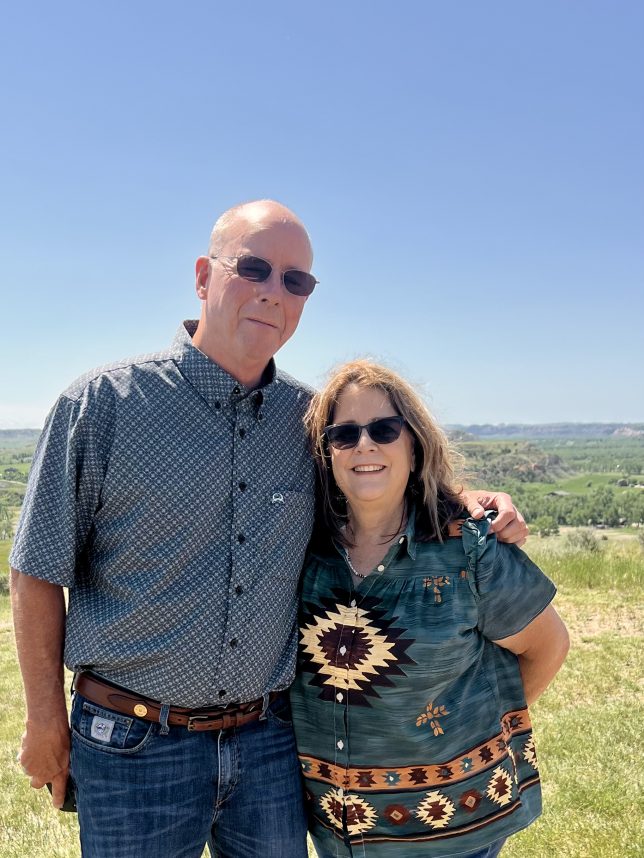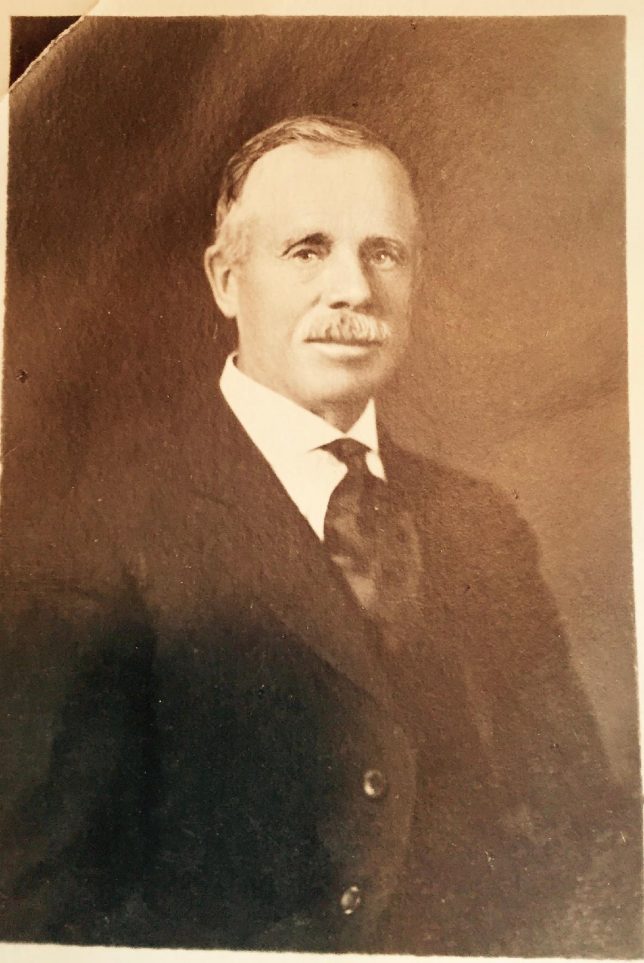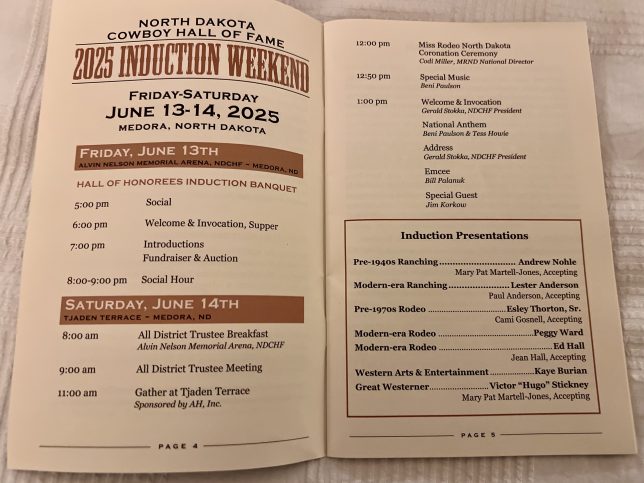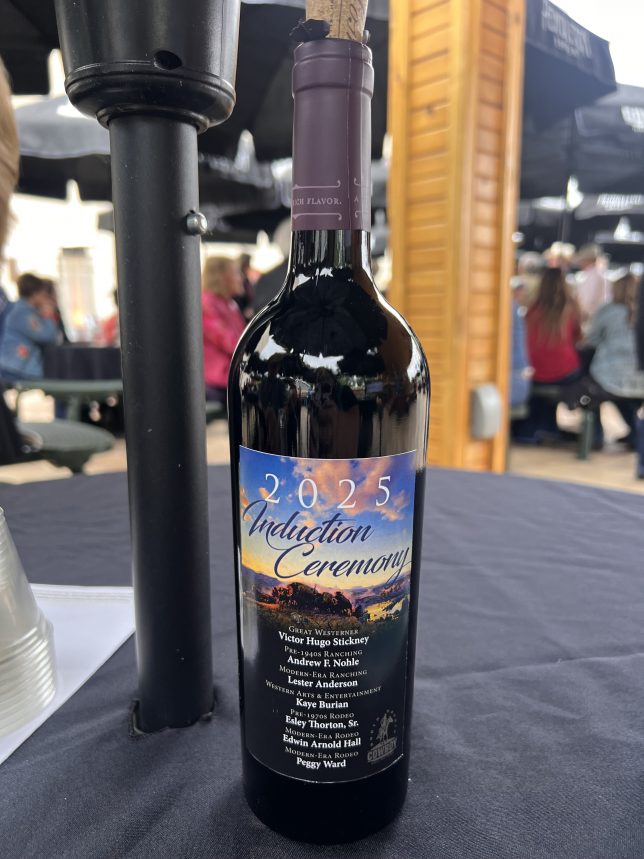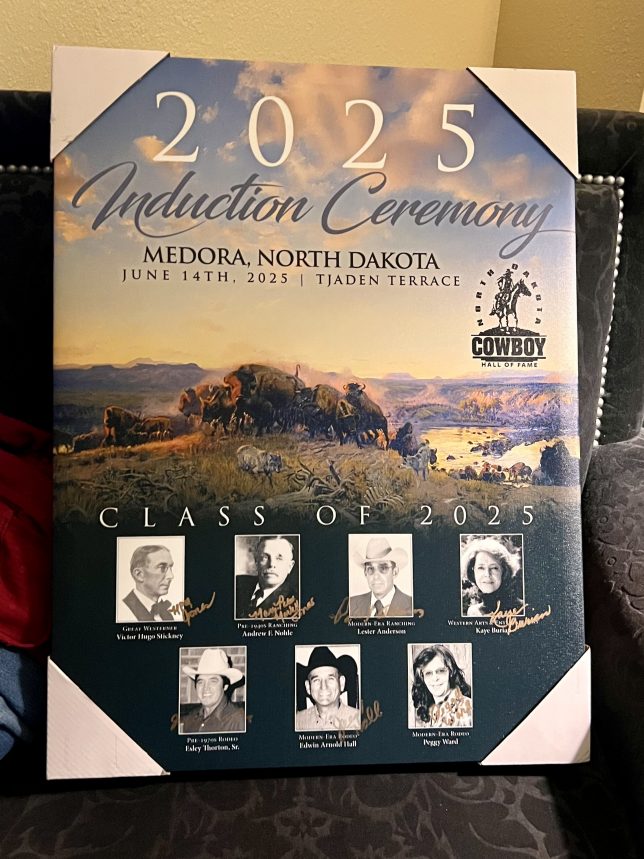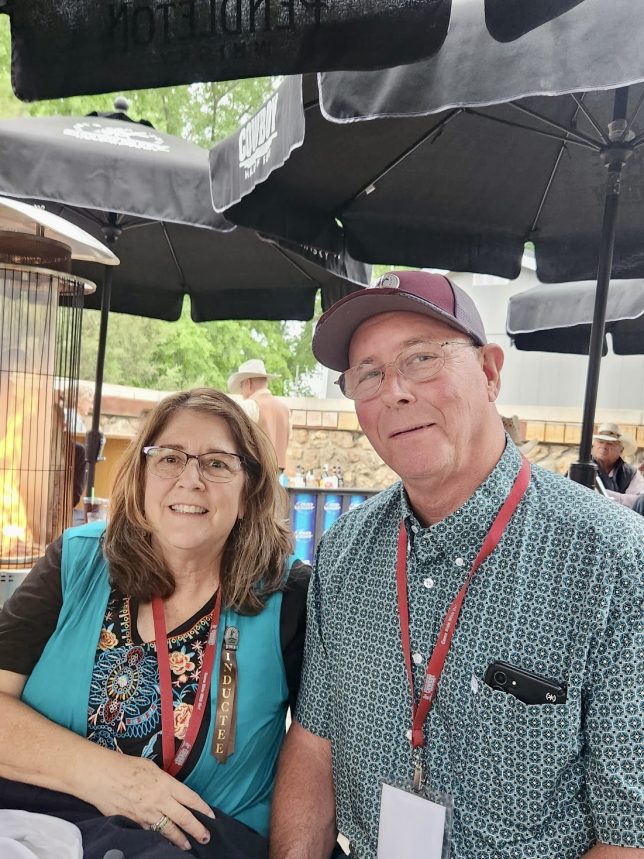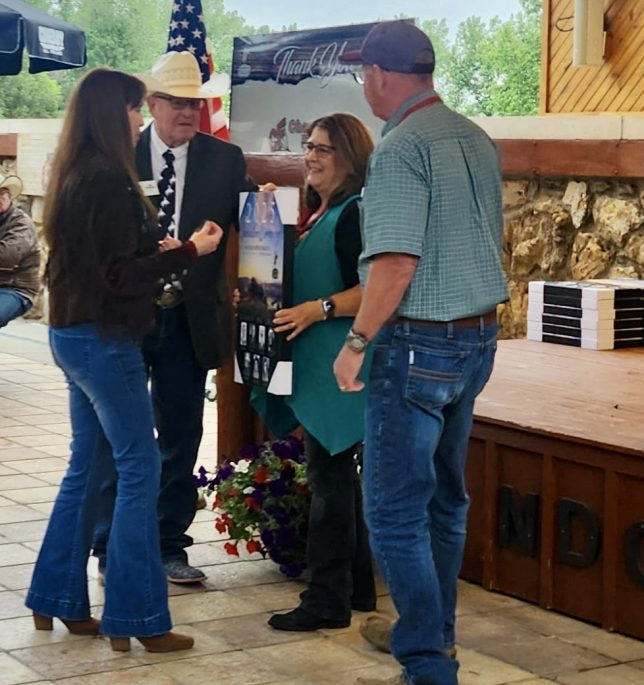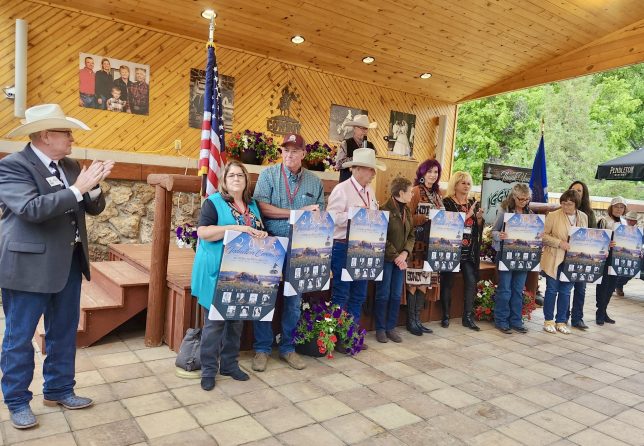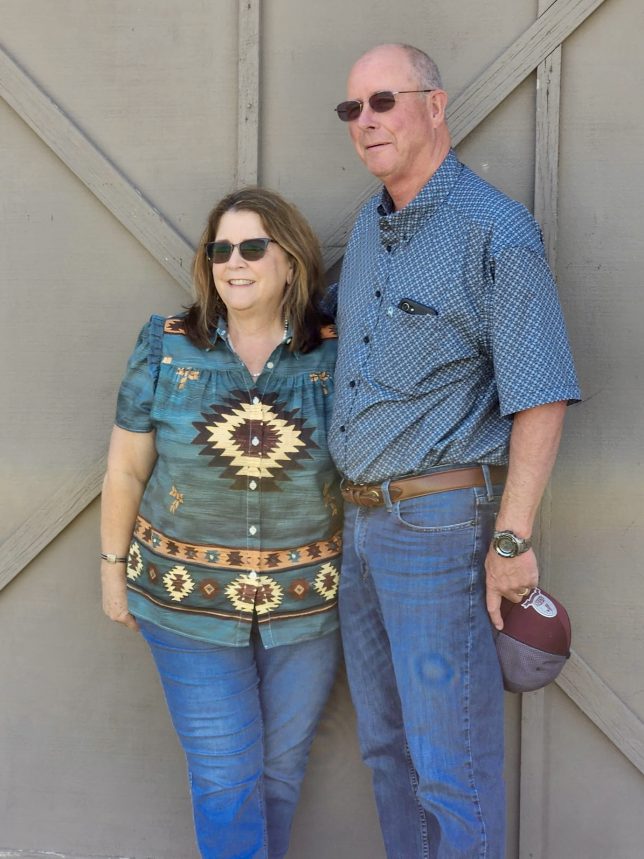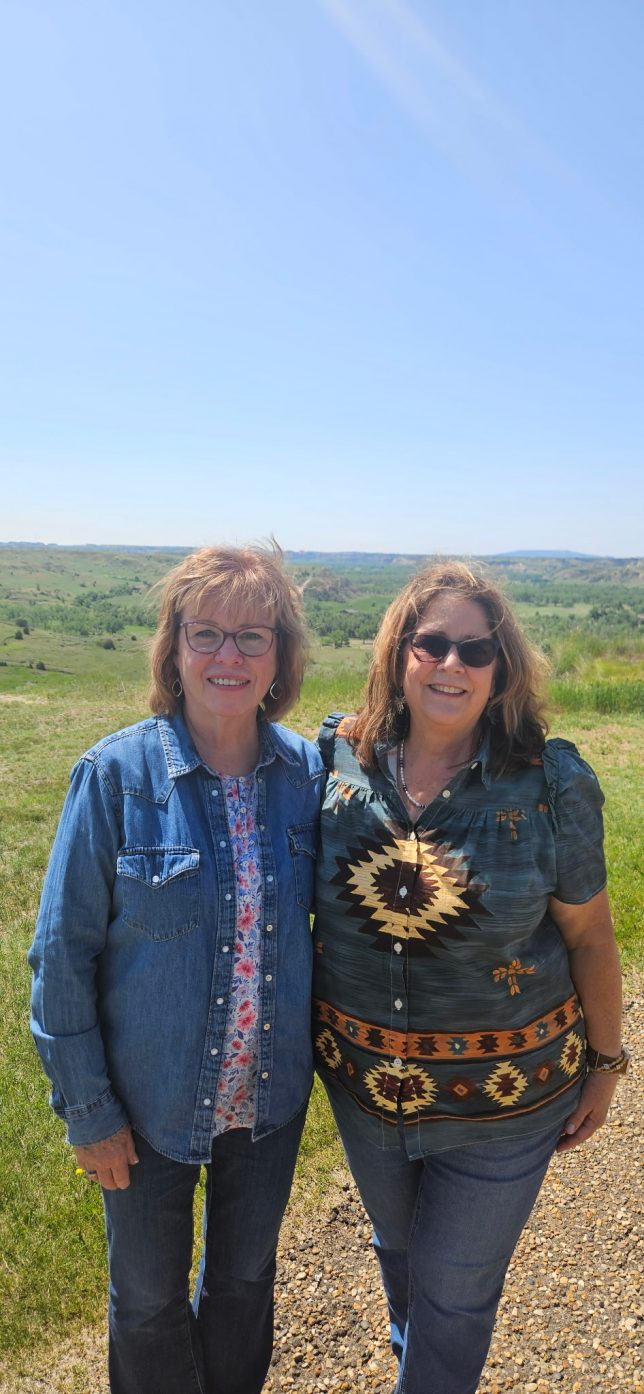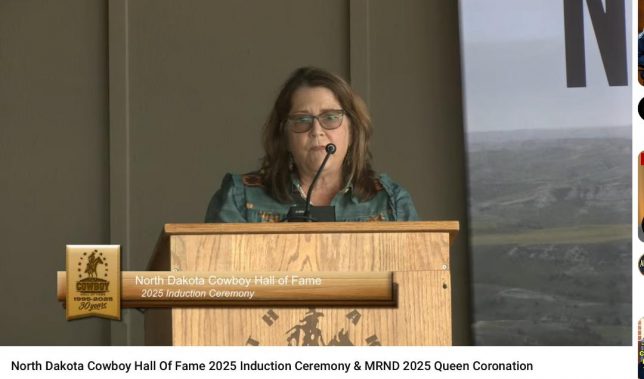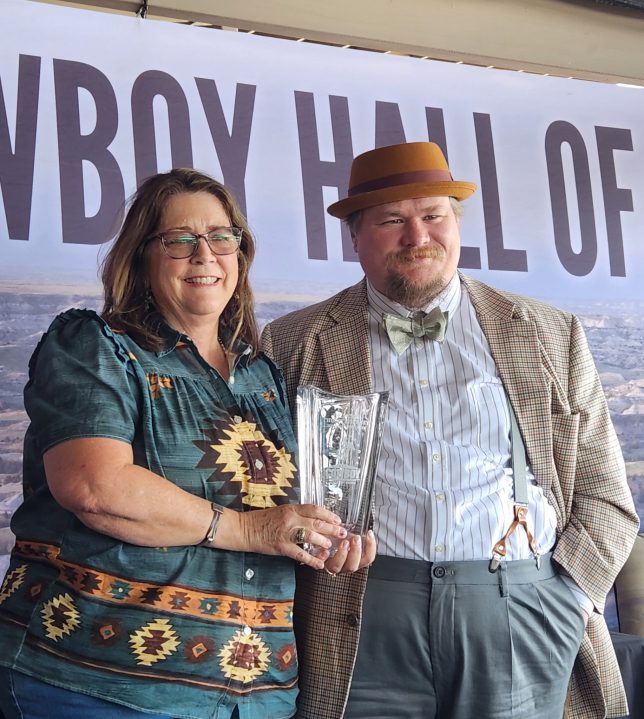2025 Induction North Dakota Cowboy Hall of Fame June 13-14, 2025
I was proud to support two deserving men for induction in to the NDCHF.
Pre- 1940’s Ranching Andrew Nohle and Great Westerner Dr. Victor Hugo Stickney
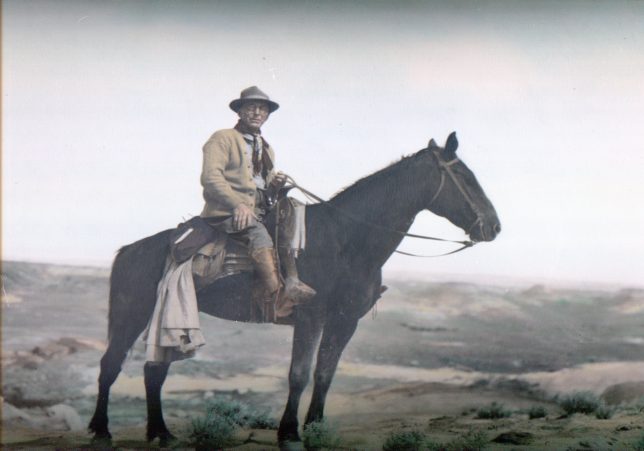
The induction speeches and links to the ceremony are below. Articles with more information can be found on this website
Andrew J. Nohle
Induction Remarks
Good afternoon,
I am so happy to be here. I am also grateful – grateful to the Board of Directors who accepted my application and nominated Andrew Nohle, and grateful to all the trustees that voted for his induction. I am also grateful to Andrew Nohle himself and all the men and women like him, who took the risks, persevered and left me and my family a better country to live in. I obviously think it is important to remember Andrew Nohle, but I also see him as a representative of all those like him, who built this country but whose name may never appear on a wall or memorial.
Andrew Nohle died 100 years ago, and with every passing year his story was in more and more danger of being lost. His picture might be on the wall of the County Courthouse as one of the first McKenzie County commissioners, but that is not his story. Andrew Nohle’s story showcases why the North Dakota Cowboy Hall of Fame and its mission is so important, and now because of the NDCHF it will be preserved.
Six years ago when I was here to celebrate the induction of my grandfather, C.F. Martell, a good family friend was also here. Mr. Lloyd Lester who spent many years on the Martell Ranch and had a unique friendship with Martell; he was a gold mine of knowledge. He knew quite a bit about Nohle and proudly would show you a recipe written on an original Nohle paper tablet. Lloyd is gone from this earth now and I know he took with him many stories. There’s comes a moment, when if a story has not been saved, it is lost to time and known only to God
There is so much richness, importance, and layers in the stories of those who have gone before us. Think about what Andrew Nohle saw and experienced! In a history book where he was mentioned, I found the statement that he was the first white rancher in the area. What was that like?! Not just for him but for the native people in the area as well.
Nohle went on to lay the foundations for so much in western N.D. that we depend on. It wasn’t just the banks, businesses and schools he started. It wasn’t just the roads and irrigation projects he oversaw. It was the helping hand he gave to his neighbors; the feed in times of drought, the loans, many that were never repaid, or the jobs provided so others could get their own start. His accomplishments, whether we realize it or not, are still felt today, either directly or as the strong foundation for others to build on. We must never forget where we came from, and who through toil and hardships paved the way for our future.
As a side note I have a couple of little stories that tickle me, so please indulge me and I think you will understand why. Andrew Nohle came west in 1885, well before it was common to have a camera to record your life. When I was putting together his nomination binder availability pictures were limited; just a family photo taken before he went west and the portrait done when he was appointed as a McKenzie County commissioner. When Nohle was announced on Facebook as the Pre 1940’s Ranching inductee, a lady I did not yet know, Laura Grzanic, commented that her parents worked for him. I immediately messaged her and found out that her parents met and worked on the Nohle place in the 1940’s. This of course was after his passing, but she had pictures of the house he built and a picture from the early 20’s of riders on the Nohle place that included Andrew. It might seem a little crazy but this was a thrill for me. I never stop looking for information to add to my files, and a rare picture was extra special.
When I was researching an article about Lewis and Clark in North Dakota a few years ago, I came across a notation in a travelogue about a little lake the Expedition camped at. It was described by Meriwether Lewis in his journal as being near the confluence of the Yellowstone and Missouri Rivers, and that is now known as Nohly lake. This is where Nohle’s Dore area ranch was. Obviously Nohle named the little lake next to where he built his ranch, but how cool is this! that where he settled was a spot where the Lewis and Clark expedition camped!
As trustees I think it is important for us to seek out these stories, especially for those who have few if any relatives and friends left to act as their advocates. Andrew Nohle is an example of this – he married late and had no children. He was a mentor to many, but his holdings were long ago dispersed and he really had no one left to advocate for him but a great niece born over fifty years after his death, who accidentally learned of all he accomplished. I can honestly say there was not and would not be anyone else to make sure his story is preserved. So, once again I thank the Board of Directors and the Trustees for adding to the NDCHF archives the story of Andrew Nohle.
Thank you
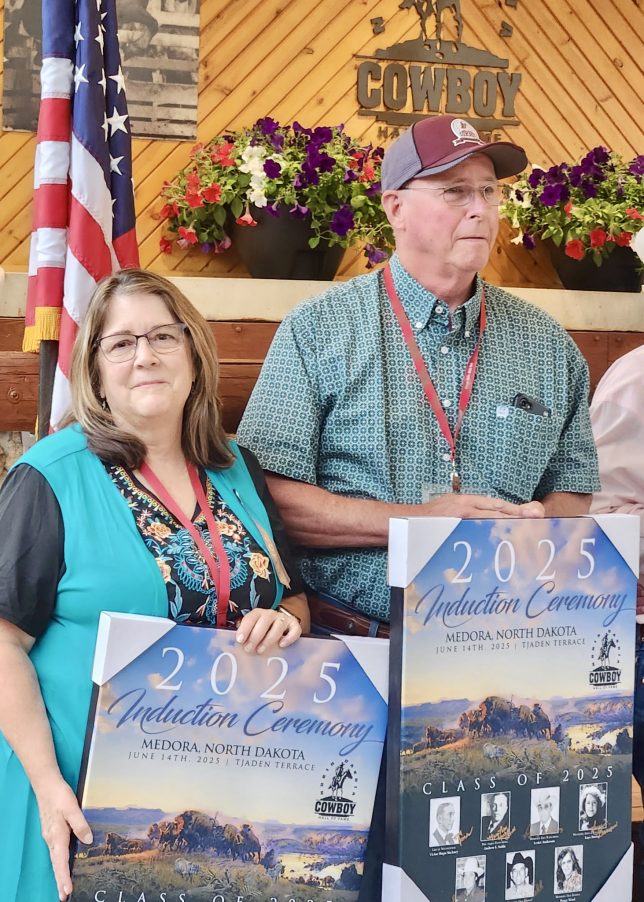
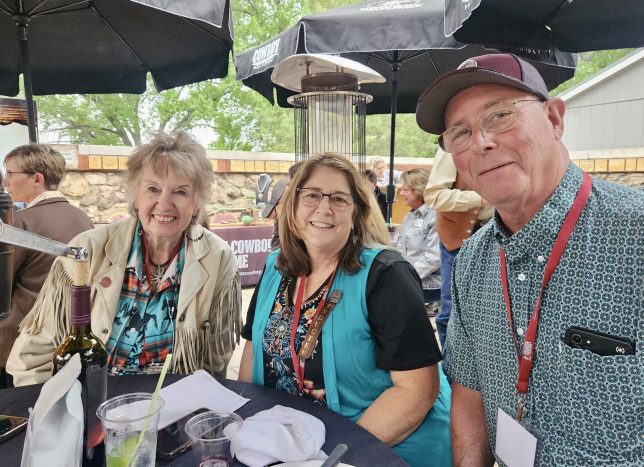
Dr. Victor Hugo Stickney
North Dakota Cowboy Hall of Fame
Induction Remarks
Good afternoon again! And most importantly, thank you again to the Board of Directors for nominating Dr. Victor Hugo Stickney, and to the trustees who voted for him to be inducted into the NDCHF as a Great Westerner.
As I was pondering all this, and realizing I had two sets of remarks, to give, one of those email updates that I get from organizations I follow, came in with this quote: “A nation’s greatness lies in its possibility of achievement in the present, and nothing helps it more than the consciousness of achievement in the past”
This was written by Theodore Roosevelt and is in his book American Ideals. When I saw this quote from the Theodore Roosevelt Center in Dickinson, it was a gift and seemed so perfect considering what we are celebrating today, and where we are – near the site of the soon to be opened Theodore Roosevelt Presidential Library and not too far from where Roosevelt and Dr. Stickney first met. As we look out across North Dakota from atop this hill, we are seeing where Dr. Stickney rode on his way to doctor someone in that vast area that he traveled. I can envision him in my mind on his horse galloping through the badlands and prairies to tend to a family or cowboy in need.
Stickney was described in his biography at the National Cowboy Hall of Fame as having “one of the richest and most productive lives a man can live. He had achieved distinction in the practice of his profession. He had been a leader in his state and community, and public affairs; and had been a founder of a fine college in his native city …..he aided by personal participation and financial assistance to others the establishment of the livestock industry in the western Dakotas. And he left a heritage of affectionate memory in the hearts of thousands he had served, and with whom he had shared the hardships of pioneer life.”
Dr. Stickney is now a part of our past, but knowledge of his character and achievements gives us something to exemplify and build on as we live our lives and add to the history of our nation. There are many accounts of Dr. Stickney’s devotion, fearlessness, generous soul and innovative spirit. When you look at his accomplishments it is staggering.
And so again, this inductee highlights the reason the work of the NDCHF is so important. These stories, these legacies, are preserved and remembered. Stickney was one of the first inductees into The National Cowboy Hall of Fame in 1966, but being recognized here in N.D. eluded him. Convinced he should be honored here at the NDCHF, in the heart of where he lived and worked, I took on the role of his advocate.
I can’t know for sure, but the romantic in me likes to think that these two men I championed, Stickney and Nohle, knew each other. I do know they both donated to help cover the costs of the North Dakota exhibit at the Lewis and Clark World Centennial Exhibition in 1905, and so it seems they also understood the importance of history. (BTW the exhibit won the grand prize for General Excellence) With all the traveling that they did around these parts and the enterprises they were involved in during their later years, how could they not have met?
There are so many stories we can speculate on in our minds, and of course we will never know if any of these are true, but I am grateful for the stories we do know, that are being preserved here at the NDCHF.
And so, I am delighted and proud that Dr. Stickney is getting this recognition, but this is not my award. While the vase would look great in my family room, I felt it should really go somewhere more appropriate, I did a little research to see if I could find any of Stickney’s descendants. He had two daughters. Dorothy went on to be a famous Broadway actress and never had children. Marjorie married a young doctor and did have children, but whom and how many is unclear. None of my searches netted any results. Neither the National Cowboy Hall of Fame, nor Dickinson University has any information about Dr. Stickney’s descendants either.
However, here with me today is Dr. William Hansard, the Outreach Coordinator for the Theodore Roosevelt Center at Dickinson State University. Dr. Hansard will be taking the vase back to Dickinson. He wanted me to tell you that he is grateful to be here, and to note the small but pivotal role Victor Hugo Stickney played in Roosevelt’s life, especially in giving Roosevelt the opportunity to make his first great public speech in 1886, at a July 4 celebration. It was at Stickney’s insistence that a reluctant Roosevelt delivered the speech in which he famously declared, “I like big things.” He told the crowd he identified as both a Westerner and an Easterner, and laid out a bold vision for America’s future. Dr. Stickney and his wife, Maggie Hayes Stickney, were instrumental in the founding and development of Dickinson State University. Stickney Hall was dedicated in their honor in 1921. Dr. Hansard sees Dr. Stickney as a man much like Roosevelt – a gallant hero, a devoted family man, and a dedicated civic leader. Dickinson State University and the Theodore Roosevelt Center are pleased to play a part in honoring the legacy of the “Cowboy Doctor” by displaying this award on the DSU campus.
Ask Dr. Hansard to stand and be acknowledged.
Once again, I want to thank the board, the trustees, and Dr. Hansard for their help in preserving the life and legacy of Dr. Victor Hugo Stickney.
